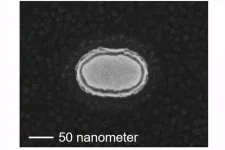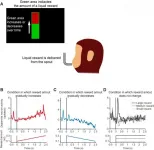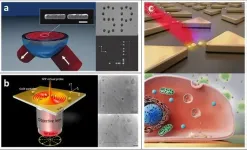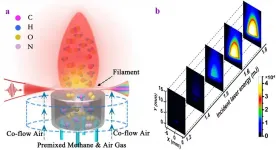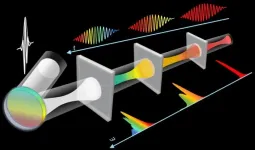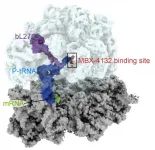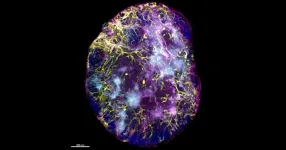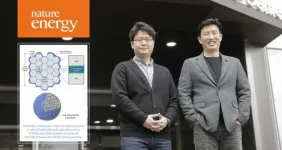Is grant review feedback perceived as fair or useful? AIBS publication investigates
2021-03-19
(Press-News.org) An important function of the grant peer review process is to provide constructive feedback to applicants for their resubmissions. However, little is known about whether review feedback achieves this goal.
The American Institute of Biological Sciences (AIBS), in collaboration with Washington State University, has published findings on a multi-methods analysis of responses from grant applicants regarding their perceptions of the usefulness and appropriateness of peer review feedback they received from grant submissions.
The analysis focused on responses from a survey sent to over 13,000 scientists concerning the feedback from their recent funding applications (largely from NIH and NSF). The results suggested that only 56-60% of applicants determined the feedback to be appropriate (fair, well-written, and well-informed), although their judgments were more favorable if their recent application was funded. Importantly, independent of funding success, women found the feedback better written than men, and more White applicants found the feedback to be fair than non-White applicants.
Less than 40% of applicants found the feedback to be very useful in informing their research and improving grantsmanship and future submissions. Overall, these results suggest that more effort is needed to ensure that appropriate and useful feedback is provided to all applicants. This investigation is in line with the AIBS commitment to increasing diversity, equity, and inclusion in the biological sciences.
INFORMATION:
The manuscript, entitled "Grant Review Feedback: Appropriateness and Usefulness" was just published online in the Journal of Science and Engineering Ethics and is available via open access.
The American Institute of Biological Sciences is a non-profit 501(c)3 public charity organization that advances the biological sciences for the benefit of all science and society. AIBS works with like-minded organizations, funding agencies, and political entities to promote the use of science to inform decision-making.
ELSE PRESS RELEASES FROM THIS DATE:
2021-03-19
Tohoku University researchers have, for the first time, developed the technology for the nanosecond operation of the spintronics-based probabilistic bit (p-bit) - dubbed the poor man's quantum bit (q-bit).
The late physicist R.P. Feynman envisioned a probabilistic computer: a computer that is capable of dealing with probabilities at scale to enable efficient computing.
"Using spintronics, our latest technology made the first step in realizing Feynman's vision," said Shun Kanai, professor at the Research Institute of Electrical Communication at Tohoku University and lead author of the study.
Magnetic tunnel junctions (MTJs) are the key component of non-volatile ...
2021-03-19
Tsukuba, Japan - Animals must make predictions about future rewards when making decisions during daily life. Specific reward-related patterns of neuronal activity are known to underlie such decisions. But now, researchers from Japan have found a new pattern of neural activity that occurs when responding to rewards that are changing over time.
In a study published this month in eLife, researchers from the University of Tsukuba have revealed that dopamine neurons, which process information about rewards, are activated in a previously undetected way when an animal considers a reward that is changing in value.
Previous studies have highlighted ...
2021-03-19
Optical tweezers and associated manipulation tools in the far field have had a major impact on scientific and engineering research by offering precise manipulation of small objects. More recently, the near-field manipulation with surface plasmons has opened opportunities not feasible with conventional far-field optical methods. The use of surface plasmon techniques enables excitation of hotspots much smaller than the free-space wavelength; with this confinement, the plasmonic field facilitates trapping of various nanostructures and materials with higher precision. It has become commonly used in trapping of micro- and nanometre-sized objects in various fields of science.
In a new review paper published in Light Science & Application, a team of scientists, led by Professor ...
2021-03-19
Laser ignition (LI) is a promising electrode-less alternative to electronic spark ignition of lean fuel/air mixtures, offering high thermal efficiency with low harmful emissions. One of the most widely adopted LI methods is nanosecond laser-induced spark ignition (ns-LISI), in which combustible mixtures undergo multiphoton ionization followed by avalanche breakdown, resulting in high-temperature and high-pressure plasma along with shockwaves. However, inevitable shot-to-shot energy fluctuations resulting from ns light sources lead to the stochastic nature of the breakdown, influencing reaction routes and producing potential misfiring.
Although LI is not a new concept, it is commonly deemed that igniting lean-fuel mixtures by an ultrashort femtosecond (fs) ...
2021-03-19
Generating intense ultrashort pulses with high spatial quality has opened up possibilities for ultrafast and strong-field science. It is so important that the Nobel Prize in Physics 2018 was given to Dr. Strickland and Dr. Mourou for inventing a technique called chirped pulse amplification, which drives numerous ultrafast lasers worldwide. With the great advancement in the last decade, Yb-based ultrafast lasers have become highly popular, because they exhibit exceptional thermal efficiency, are low in cost and are highly flexible in adjusting pulse energies and repetition rates. However, the pulse durations from these lasers are usually not shorter than 100 fs or even 1 ps, which requires external ...
2021-03-19
UNIVERSITY PARK, Pa. -- A new antibiotic compound clears infection of multi-drug resistant gonorrhea in mice in a single oral dose, according to a new study led by researchers at Penn State and Emory University. The compound targets a molecular pathway found in bacteria but not humans and could lead to new treatments for gonorrhea and infections from other bacteria, such as tuberculosis and MRSA.
The research team, which also includes scientists from the biopharmaceutical company Microbiotix, the Uniformed Services University, and Florida State, published their results in a paper appearing March 19 ...
2021-03-19
A new imaging technique is shining a light on immune responses and setting the scene for enhancing immune memory to optimise vaccine strategies.
By imaging intact lymphoid organs in three dimensions, researchers have been able to identify specialised niches, which can determine how immune T cells function.
The research, published in Nature Immunology, is a step forward in understanding the differentiation of T cells - critical cells for developing strong immune responses - and how we can use these crucial findings to inform and optimise vaccine strategies.
At a glance
Three-dimensional imaging has enabled researchers to identify the factors that play a role in determining where immune memory cells locate ...
2021-03-19
Professor Chunghun Lim and his research team in the Department of Biological Sciences unveiled a neuroprotective pathway that suppresses Lou Gehrig's Disease (ALS).
Nucleocytoplasmic transport (NCT) defects have been implicated in neurodegenerative diseases, such as C9ORF72-associated amyotrophic lateral sclerosis and frontotemporal dementia (C9-ALS/FTD). In this study, the research team has identified a neuroprotective pathway of like-Sm protein 12 (LSM12) and exchange protein directly activated by cyclic AMP 1 (EPAC1) that sustains the nucleocytoplasmic ...
2021-03-19
A new coating for lithium-ion batteries (LIBs), developed by scientists at UNIST promises extended driving for future electric vehicles (EVs). The coating, described in a paper published in the journal Nature Energy, when applied to LIBs is shown to have improved cycling stability even after being charged and discharged more than 500 times. As a result, the development of EV batteries that can drive longer distances with a single battery charge has gained considerable momentum.
Distinguished Professor Jaephil Cho and his research team in the School of Energy and Chemical Engineering at UNIST unveiled ...
2021-03-19
Binge drinking in adolescence is associated with changes in the volume of the cerebellum in young adulthood, a new study from the University of Eastern Finland and Kuopio University Hospital shows. Earlier studies have shown that excessive, long-term alcohol consumption causes damage to the cerebellum in adults, but there is very little data on the effects of adolescent drinking on the cerebellum. The findings were published in Alcohol.
The study included 58 young adults aged 21 to 28 years, whose alcohol consumption had been monitored for the previous ten years. Of the participants, 33 had been heavy drinkers since adolescence, while 25 were light drinkers, consuming little or no alcohol at all. All of them were highly functional and had normal ...
LAST 30 PRESS RELEASES:
[Press-News.org] Is grant review feedback perceived as fair or useful? AIBS publication investigates
